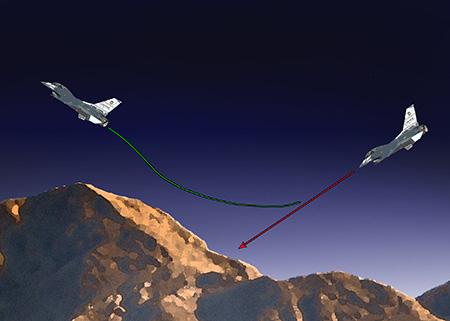It is an automatic system that takes over from the pilot and modifies the trajectory of a plane on a collision course bringing it to a safe altitude.
The Automatic Ground-Collision Avoidance System (Auto-GCAS) monitors the standard trajectory of an aircraft for the X route with the actual flight. If the calculations show discrepancies and the computer does not recognize any attempt by the pilot to avoid an imminent accident, the autopilot excludes the human counterpart and returns the aircraft to a safe altitude. The system will be installed on the F-22 and F-35 platforms while it is already operating on the F-16.
Last February, the Pentagon confirmed the first operational use, with a pilot rescued from the anti-collision system.
Although all the details are classified, it is believed that the incident involved an Air Force F-16C during a ground attack against an Islamic state post in Syria.
However, NASA has confirmed that similar programs are being tested for commercial flights, although it has not clarified how such a system could have prevented the Germanwings tragedy.
The implementation of Auto-GCAS in the F-16 fleet is a response to the significant number of accidents caused by distracted pilots or not fully able to fly following the profile of the terrain. Components of the Auto-GCAS on the F-16 include digital modifications to the flight computer, aircraft control, advanced data transfer systems, and mission software. When the plane approaches the ground, the computer determines the time frame within which the impact could occur and triggers an automatic procedure to avoid the accident.
NASA has been developing automatic anti-collision technologies for at least three decades. The first "full-envelope" tests started in the 1997. The 556 maneuvers carried out on 40 test flights have demonstrated the effectiveness of the system. Studies are underway to allow the autopilot to identify certain mission parameters, excluding countermeasures. The Auto-GCAS, in fact, saves lives, but could prevent the execution of standard tactical maneuvers.
Franco Iacch












